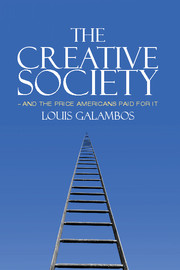Book contents
- Frontmatter
- Contents
- Preface
- 1 1931
- 2 Life, Death, and Learning in the Cities
- 3 Toward a New Economy, 1890 to 1930
- 4 State Crafting – American Style
- 5 Confronting the World
- 6 Winners and Losers, 1890 to 1930
- 7 New Deal Experiments
- 8 Fighting On God’s Side
- 9 The New Aristocracy, 1946 to 1969
- 10 The Suburban Conquest of the 1960s
- 11 Empire in the American Century
- 12 The Tattered Empire of the 1970s
- 13 The Cracked Core
- 14 The American Solution, 1981 to 2001
- 15 Conservatism: Rhetoric and Realities, 1981 to 2001
- 16 The Hegemony Trap
- 17 The American Dream, 1981 to 2001
- 18 The Creative Society in Danger
- Acknowledgments
- Index
- References
10 - The Suburban Conquest of the 1960s
Published online by Cambridge University Press: 05 June 2012
- Frontmatter
- Contents
- Preface
- 1 1931
- 2 Life, Death, and Learning in the Cities
- 3 Toward a New Economy, 1890 to 1930
- 4 State Crafting – American Style
- 5 Confronting the World
- 6 Winners and Losers, 1890 to 1930
- 7 New Deal Experiments
- 8 Fighting On God’s Side
- 9 The New Aristocracy, 1946 to 1969
- 10 The Suburban Conquest of the 1960s
- 11 Empire in the American Century
- 12 The Tattered Empire of the 1970s
- 13 The Cracked Core
- 14 The American Solution, 1981 to 2001
- 15 Conservatism: Rhetoric and Realities, 1981 to 2001
- 16 The Hegemony Trap
- 17 The American Dream, 1981 to 2001
- 18 The Creative Society in Danger
- Acknowledgments
- Index
- References
Summary
Houston, Texas, in the early 1960s was typical in many regards of the fast-growing southern and western cities of the United States. It was growing out, with new minicores of banks and shopping centers spreading around a flat exterior. The Gulf Plain was low and marshy and inviting to the real estate investors who were guiding Houston's growth. The city was miles from Galveston and the Gulf of Mexico, but Houston's avid promoters had long ago developed a channel that brought oceangoing ships right up to the city. The oil, gas, and petrochemical industries were thriving, as were the banking, legal, and transportation businesses. These provided services to the core industries and jobs for all those non-Texans pushing into the suburbs. They were moving into new apartments and ranch-style houses, sending their children to new suburban schools. Everything seemed new.
The suburban culture and economy were omnipresent in Houston, which had virtually no downtown, hardly any city center as late as the 1960s. The automobile was as important to everyday life in Houston as it was in Los Angeles. As the new houses went up, the city often didn't even bother to build sidewalks. Who would walk? Highways cut through the city, linking the suburbs, the shopping centers, and the public schools that were the essential base for the universities and the professions. The schools were growing in pace with the suburbs. The roads that were the city's lifelines also brought workers from the other side of the city – the African-American and Hispanic laborers, men and women who played as crucial a role in Houston life as air conditioning. Houston had the temperature and humidity of Calcutta, India, and on hot summer nights you could hear the steady dripping of water from the broad leaves of the tropical bushes.
- Type
- Chapter
- Information
- The Creative Society – and the Price Americans Paid for It , pp. 151 - 165Publisher: Cambridge University PressPrint publication year: 2011

